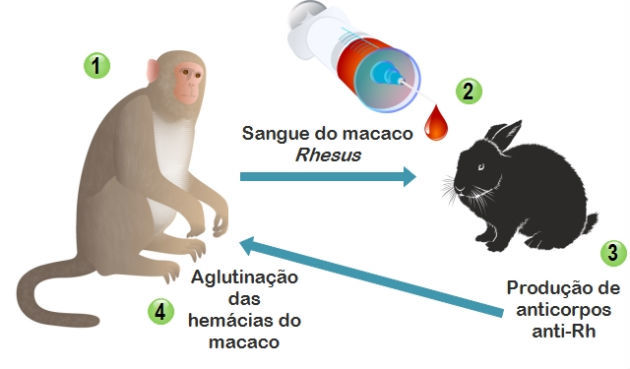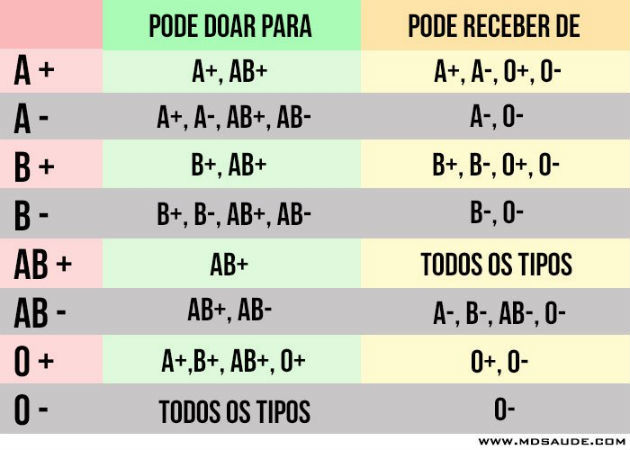The Rh factor is a system of blood groups, discovered from the blood of the Rhesus monkey . It indicates whether the blood is positive or negative.
Discovery of Rh factor
The Rh factor was discovered in 1940, by scientists Landsteiner and Wiener, through experiments involving rabbits and monkeys of the genus Rhesus , hence the origin of the name of the Rh factor.
They found that by injecting the monkey’s blood into the rabbits, production of antibodies started to fight the red blood cells that were introduced. These antibodies were called anti-Rh and were responsible for agglutinating the Rhesus monkey’s red blood cells .
In tests with human blood, research has shown that certain types of blood have an absence of the Rh factor, since individuals who had red blood cells agglutinated by the Rh antibody.

Thus, the classification as Rh positive (Rh +) emerged, while red blood cells that did not agglutinate were classified as Rh negative (Rh-).
Thus, not everyone has the Rh antigen . To find out if a person has Rh + or Rh-, an exam is performed in which the blood sample is mixed in a Rh solution. If red blood cells clump together, the blood is Rh +, if not, it is because the person is Rh-.
Rh factor genetics
The Rh system is determined by a pair of alleles with complete dominance, with the R allele being the dominant and the recessive r allele.
Thus, the Rh factor genotypes are as follows:
| Rh factor | Red Cells | Genotype |
|---|---|---|
| Rh + | Rh antigen | RR or Rr |
| Rh- | Without Rh antigen | rr |
Rh factor in pregnancy

It is important to recognize the Rh factor at the time of blood transfusions. For example, a person with Rh- should not come into contact with Rh + blood.
This is because the body will try to destroy the unknown substances present in the blood received.
There is also a risk of blood incompatibility problems during pregnancy. Consider a woman with Rh- pregnant with a baby with Rh +, in which case the baby’s red blood cells, seen as a foreign agent, could be destroyed by the mother’s body’s defense system.
This condition is known as fetal erythroblastosis and can cause the baby to die during pregnancy or after birth.
In the Rh set there will be no ready-made anti-Rh antibodies in the plasma. These antibodies are only produced if a Rh- person ends up receiving blood from a Rh + person.
Blood groups
Blood types or groups were discovered in the early 20th century by mixing blood samples from different people. It was observed that in some cases the red blood cells clumped together, concluding that there were different types of blood with reactions between them indicating incompatibility.
The most important blood types of the human species are the ABO System and the Rh Factor.
In the ABO System there are four types of blood: A, B, AB and O. Each of them is determined by the presence or absence of agglutinogens and agglutinins.
Blood incompatibility can occur as agglutinins react with antigens. Thus, it is important to recognize blood types at the time of a transfusion.
Check the compatibility chart between blood types:

